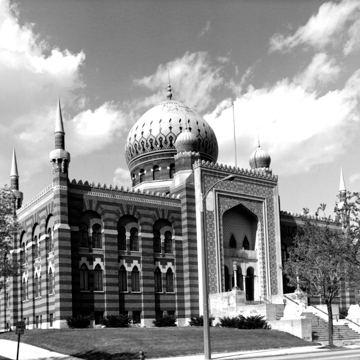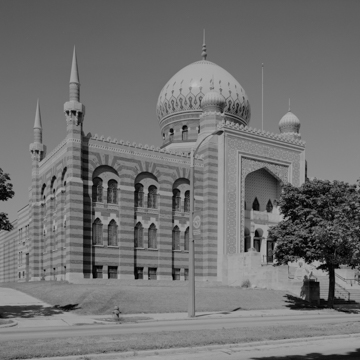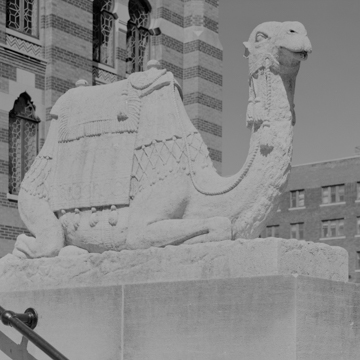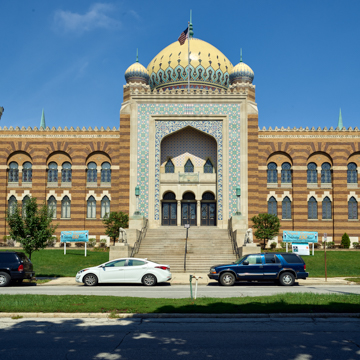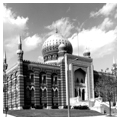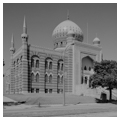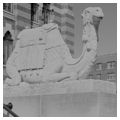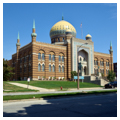Tripoli Temple is a stunning example of 1920s fantastical architecture, here taking its inspiration from Muslim mosques. Despite its appearance and name, the temple always had the secular function to house the local Shriners chapter. Many have assumed that the temple was patterned after India’s famous Taj Mahal, but it actually echoes Islamic architecture in Iran and North Africa. The banded brick walls are characteristic of North African design, and the gilt and colorful glazed tiles, laid in interlace, arabesque, and other repetitive patterns over the central entrance pavilion and three domes, recall sixteenth-century Iranian religious buildings. A grand staircase leads past two stone camels guarding the entrance, which is set behind a horseshoe-arched arcade within a pointed-arch portal. The slender pointed towers at each corner of the temple resemble minarets. The bulbous tiled dome is one of Milwaukee’s most whimsical architectural features.
Here and in other cities, the eclectic Islamic-influenced architecture of Shriner temples was meant to reflect the order’s elaborate rituals. Mystical ceremonies include trappings loosely based on Arabic precedents. Shriners are Master Masons who reach the highest degree of Free Masonry, passing all its required rituals. Dating from 1870, the Shriners’ order emphasizes charity, fellowship, and recreation. To the wider public, the Shriners are the most visible and colorful order of Masons, participating in parades and wearing distinctive red fezzes.











